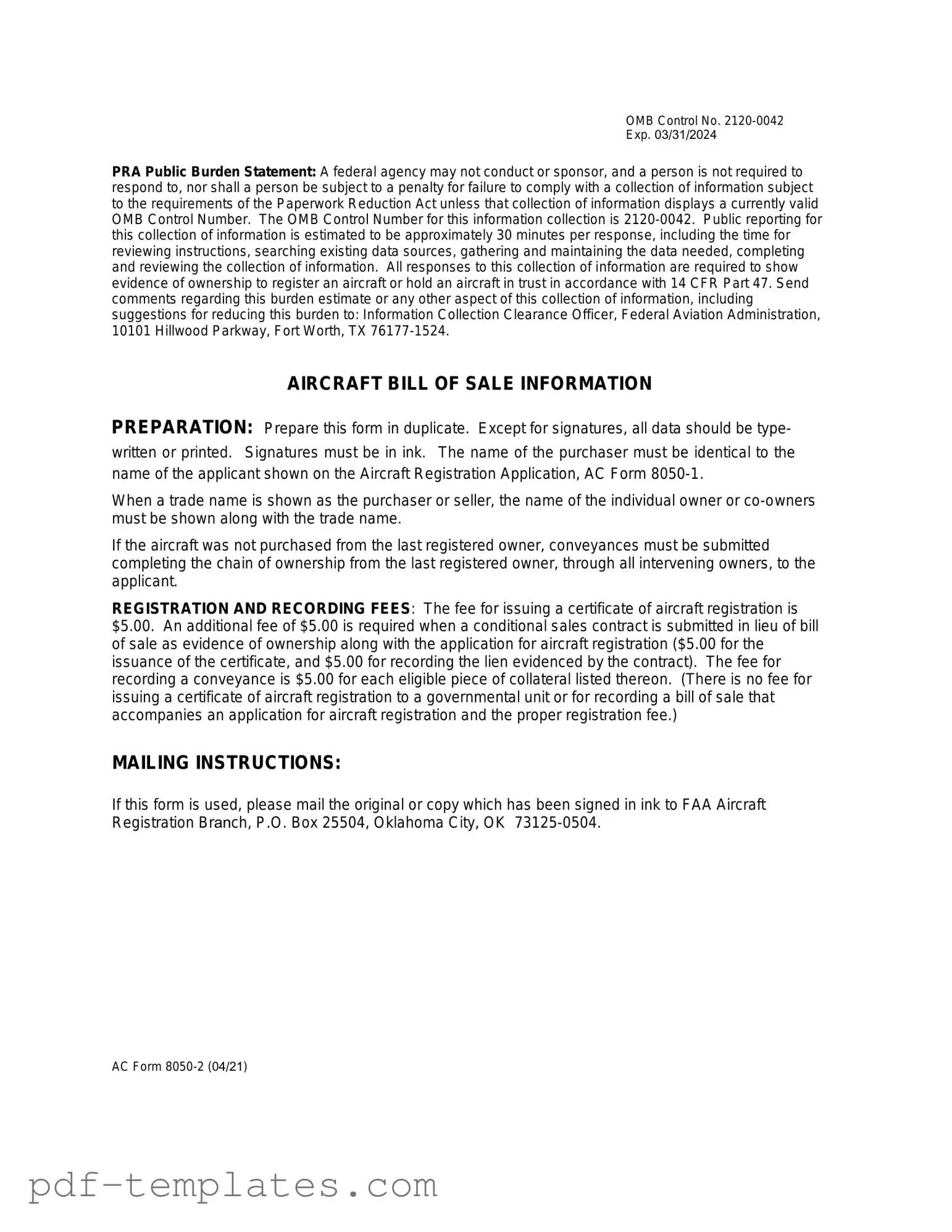The Aircraft Bill of Sale AC 8050-2 form is similar to the Vehicle Bill of Sale. Both documents serve as proof of ownership transfer for a specific asset. Just like the Aircraft Bill of Sale, the Vehicle Bill of Sale includes essential information such as the buyer's and seller's details, a description of the vehicle, and the sale price. This document is often used in private sales, providing legal protection for both parties involved in the transaction.
Another document comparable to the Aircraft Bill of Sale is the Real Estate Purchase Agreement. This agreement outlines the terms of a property sale, including the purchase price and contingencies. Similar to the Aircraft Bill of Sale, it requires signatures from both the buyer and seller to validate the transaction. Both documents are critical in establishing clear ownership and ensuring that all parties are aware of their rights and obligations.
The Boat Bill of Sale shares similarities with the Aircraft Bill of Sale as well. Both documents facilitate the transfer of ownership for recreational vehicles. They contain details about the buyer, seller, and the asset being sold. The Boat Bill of Sale also serves as a legal record, which can be useful for registration purposes and future transactions.
For those dealing with all-terrain vehicles, understanding the necessary documentation is vital. The Connecticut ATV Bill of Sale form plays a crucial role in the sale and transfer of ownership of ATVs within the state. Similar to other legal documents in the vehicle transaction process, it ensures that important details are properly recorded and acknowledged. You can learn more about the form and access it through this link: https://vehiclebillofsaleform.com/.
The Equipment Bill of Sale is another document that resembles the Aircraft Bill of Sale. This form is used for the sale of machinery and equipment. Like the Aircraft Bill of Sale, it includes information about the buyer and seller, a description of the equipment, and the sale amount. Both documents help protect the interests of the parties involved by providing a clear record of the transaction.
The Franchise Disclosure Document (FDD) is also somewhat similar. While it primarily focuses on franchising agreements, it contains essential information about the sale of a franchise, including terms and conditions. Like the Aircraft Bill of Sale, the FDD is designed to ensure transparency and protect both the franchisor and franchisee during the transaction process.
Lastly, the Personal Property Bill of Sale is akin to the Aircraft Bill of Sale in that it documents the sale of personal items. This form includes details about the buyer, seller, and the item being sold. It serves as a legal record of the transaction, providing assurance to both parties. Just as with the Aircraft Bill of Sale, having this document can prevent disputes and clarify ownership rights.
